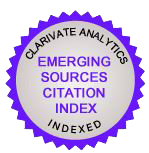Embroidery in the Clothes of the Ukrainian Intellectual Society at the Turn of 19th - 20th Centuries
Keywords:
Ukrainian embroidering, embroidered shirt, embroidery, ethno fashion of the turn of the 19th - 20th centuries, personological approachAbstract
With this publication, author honors the memory of not only famous Ukrainian trendy persons, but outstanding Ukrainians, who, despite canons, orders and prohibitions, gave very significant national-cultural and educational lessons of Ukrainianness. By their thoughts and actions, including the wearing and study of national clothing, they demonstrated their nationality and thus made an invaluable contribution to the struggle for Ukrainian independence.
Author carried out terminological analysis of concepts related to clothing that has a strong Ukrainian flavor for a deeper understanding of the cultural and historical aspects of selected issue. Using a personological approach, interesting facts from the life of representatives of aristocratic nobility of Ukraine at the turn of 19th - 20th centuries and their families in context of traditions of national revival, in particular, ethno-fashion and its study were analyzed. Based on the analysis of historical, ethnological, cultural and educational sources of information, including items from the collections of famous Ukrainian museums, made our own generalizations and conclusions and drew parallels between events and facts of two hundred years ago and nowadays.
The reader is presented with exceptional examples of exaltation of the value of Ukrainian embroidery, as well as cases where embroidery traditions of Ukrainians, including clothing, were in danger of self-destruction. In particular, the author’s attention is focused on the tradition of wearing embroidered items as a progressive fashion trend (in the families of Ivan Franko, Kosachiv-Drahomanov and Volodymyr Korolenko, etc.), as well as collecting samples of Ukrainian folk embroidery and exploring their uniqueness.
Downloads
Downloads
Published
How to Cite
Issue
Section
License

CC BY-SA: This license allows reusers to distribute, remix, adapt, and build upon the material in any medium or format, so long as attribution is given to the creator. The license allows for commercial use. If you remix, adapt, or build upon the material, you must license the modified material under identical terms.
CC BY-SA includes the following elements:
BY ![]() – Credit must be given to the creator
– Credit must be given to the creator
SA ![]() – Adaptations must be shared under the same terms
– Adaptations must be shared under the same terms
Authors who publish with this journal agree to the following terms:
1. Authors retain copyright and grant the journal right of first publication with the work simultaneously licensed under a Creative Commons Attribution License that allows others to share the work with an acknowledgement of the work's authorship and initial publication in this journal.
2. Authors are able to enter into separate, additional contractual arrangements for the non-exclusive distribution of the journal's published version of the work (e.g., post it to an institutional repository or publish it in a book), with an acknowledgement of its initial publication in this journal.
3. Authors are permitted and encouraged to post their work online (e.g., in institutional repositories or on their website) prior to and during the submission process, as it can lead to productive exchanges, as well as earlier and greater citation of published work (See The Effect of Open Access).













